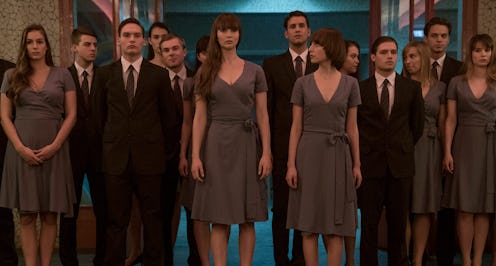Entertainment
The True Stories Behind ‘Red Sparrow’ Are Even Wilder Than The Actual Movie

In the new film Red Sparrow, Jennifer Lawrence portrays Dominika Egorova, a special type of spy known as a sparrow. In the movie, sparrows are shown to be a certain branch of the Russian Intelligence Service (SVR) that trains women to be "honey traps" who use their sexuality to seduce and compromise foreign assets, like say, a CIA agent. But are red sparrows real, or is the movie just an example of James Bond-inspired spy fiction?
Believe it or not, there was at one time a dedicated sparrow program in Russia, and it's believed that Russian honey trap spies still exist even without a specific program built around them. This is according to Jason Matthews, author of the novel Red Sparrow, upon which the movie is based. And Matthews didn't just take to Google to do the research for his 2013 book; he drew upon his own life experiences. That's because Matthews spent 33 years as a CIA agent before becoming an author, and was therefore plenty knowledgeable about Russian tradecraft (the term used by intelligence officers to describe their jobs). "There was a Sparrow School in Kazan, in the Republic of Tatarstan, in European Russia, during the Cold War, and the use of sexual entrapment and compromise of targets by the Russians is well documented," Matthews told Publishers Weekly in 2013. "I don’t know if there still is an operating Sparrow School, but I imagine honey traps are still used."
Former CIA agent Jonna Hiestand Mendez backed up the film's depiction of the sparrow program in an interview with the New York Times, and detailed an event wherein an American Marine stationed at the American embassy in Moscow was seduced by a sparrow and ended up allowing Russian agents onto the property as a result. "It was a seduction scenario not unlike what you would have done in your movie," she said. Mendez added that other countries, including China, were also known to have similar programs.
In addition to the sparrows, many of the other details Matthews included in his book were directly influenced by actual international espionage, most notably the way he describes agents conducting their tradecraft. "The amount of tradecraft, particularly surveillance and counter-surveillance, will make the in-house reader wonder how he got all this past the Publications Review Board," wrote James Burridge and Michael Bradford in a review of Matthews' novel for the CIA. "The scenes in which Nate and Dominika course through urban landscapes in intricate, hours-long surveillance detection routes in order to get clean before a clandestine operational act are accurate, richly detailed renderings of anxiety-filled tasks conducted daily by intelligence operatives around the world."
Though she probably wasn't a sparrow, since the program was believed to have ended with the Cold War and the KGB, former Russian agent and model Anna Chapman is probably the most well-known example of a possible modern day honey trap spy. Chapman was arrested in 2010 for being part of the Illegals Program spy ring, which was made up of Russian sleeper agents looking to obtain intelligence in the U.S. But she really made headlines after a 2012 article in The Independent claimed that Chapman was close to seducing a member of President Obama's cabinet in a honey trap operation, and that this was the reason for the Illegals Program being broken up when it was. However, this characterization was later disputed by the FBI, who stated that the comments by FBI agent C. Frank Figliuzzi on which The Independent based their story were misconstrued, according to The Wire's Spencer Ackerman.
Whether there are still Russian sparrows out there conducting honey trap operations today is unclear, but they were definitely around during the Cold War, and they were pretty similar to the example portrayed by Jennifer Lawrence in Red Sparrow.